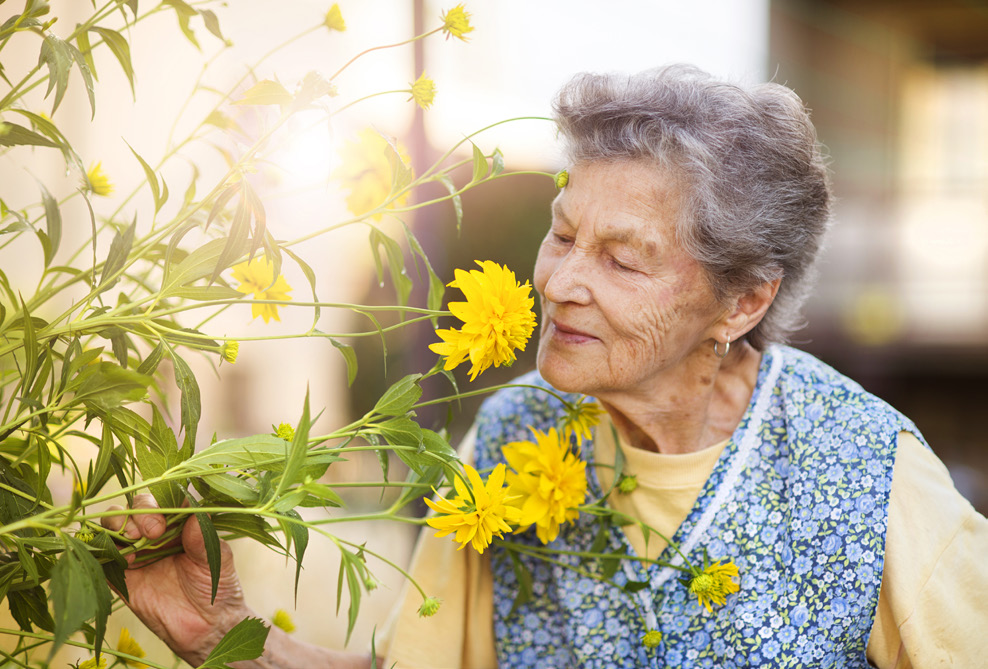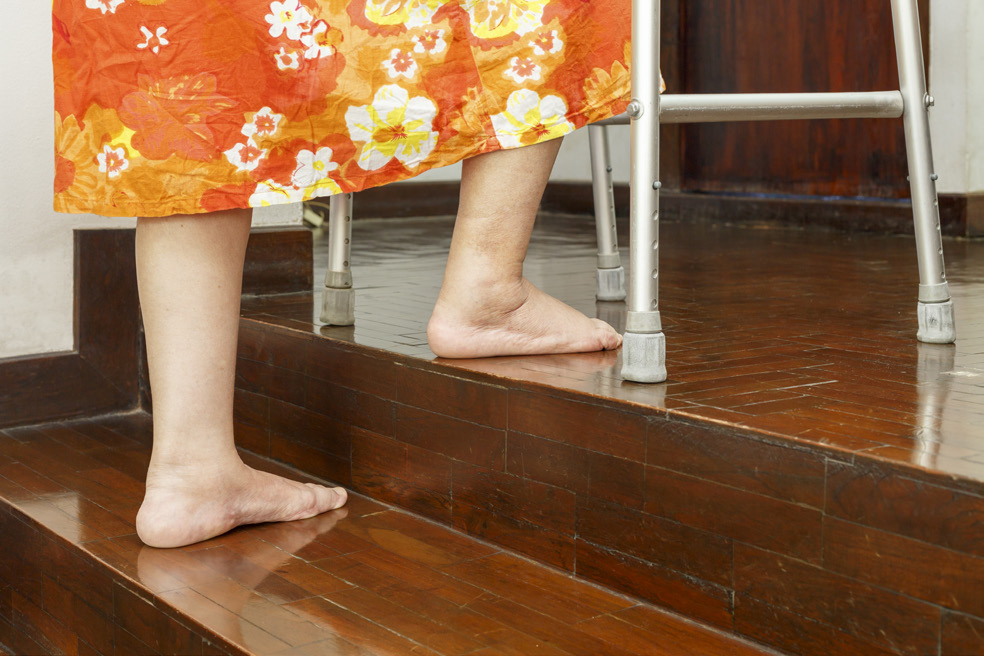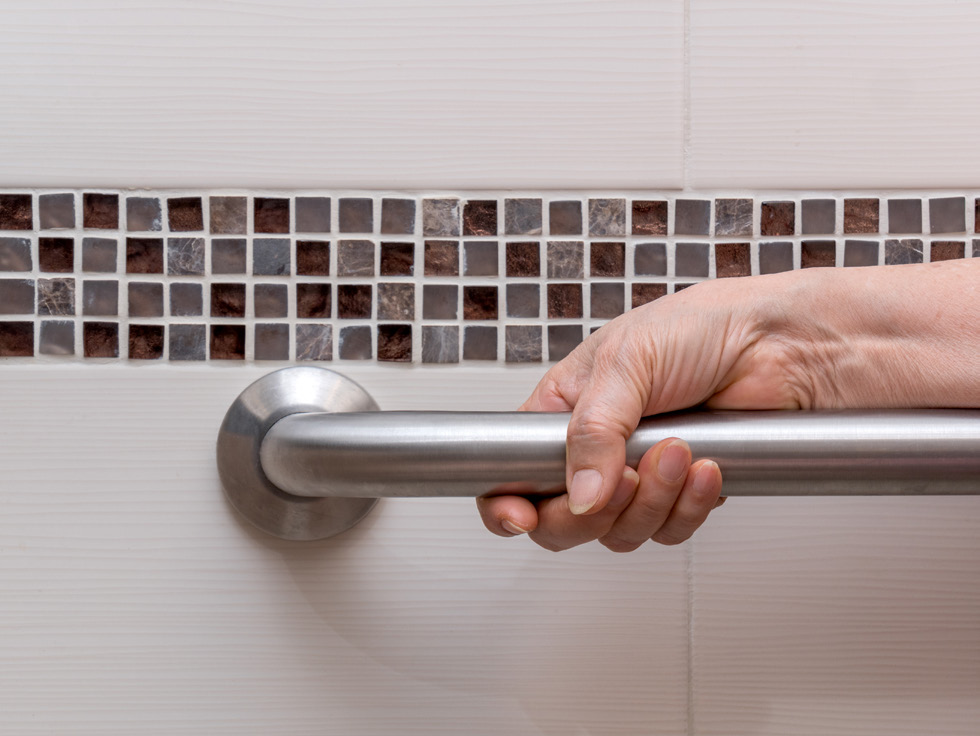Safety in the Home When Caring for Older Adults
Promoting Well-being and Independence for Older Adults Living at Home
The physical and mental changes of aging can impact how an older adult takes care
of  activities of daily living. These include activities such as bathing, eating and toileting.
In this document, you will find many suggestions for small adjustments in the home
to support older adults. These suggestions may help create a supportive, safe and
engaging environment. This is important for a family member who may be having problems
as they age. These problems may include balance and frailty, social isolation and/or
struggling mobility. Adjustments in the home environment also may help family caregivers.
Home modifications may minimize the stress that some family caregivers feel when caring
for a loved one with physical or mental decline.
activities of daily living. These include activities such as bathing, eating and toileting.
In this document, you will find many suggestions for small adjustments in the home
to support older adults. These suggestions may help create a supportive, safe and
engaging environment. This is important for a family member who may be having problems
as they age. These problems may include balance and frailty, social isolation and/or
struggling mobility. Adjustments in the home environment also may help family caregivers.
Home modifications may minimize the stress that some family caregivers feel when caring
for a loved one with physical or mental decline.
Physical Losses with Aging
Following is a list of general changes in the senses with aging. These changes may impact how well an older adult is able to safely maintain their independence in their home:
- Hearing loss (also inner-ear balance disorders)
- Vision loss (depth perception, peripheral vision, glare)
- Touch (includes, pressure, temperature, pain)
- Taste and smell (extreme changes in taste and smell may be early warning signs of dementia-related disorders)
Chronic Conditions
Older adults also may have other chronic conditions like diabetes and high blood pressure, post-stroke effects, and heart disease/Chronic Obstructive Pulmonary disease (COPD). These chronic conditions also may cause an older adult to become frail. When an older adult is physically frail, they often become unable to care for themselves.
Losses Associated with Dementia
In addition to general physical and mental losses due to aging, older adults also may have mental decline due to dementia. All types of dementia involve mental decline that is severe enough to interfere with usual activities and daily life. This may include language, memory and remembering where things are in the home. All types of dementia, which includes Alzheimer’s disease, are mental conditions which make it difficult to:
- Acquire and remember new information
- Perform tasks like reading, writing and speaking
- Maintain normal vision
- Control emotions
Nearly all people with dementia also will experience Neuro-psychiatric Symptoms (NPS). These are the symptoms that are core features of Alzheimer’s disease and related dementias. These symptoms may include:
- Depression and other symptoms of low esteem, extreme sadness or despair
- Loss of interest in taking part in the things that the individuals used to like to do like gardening, cooking and socializing.
- Sleep disorders which include loss of sleep and changes in sleep patterns
- Agitation, anger and mood swings
For a Safe Home Environment, Check These First
When checking your home, start with these general home safety features.
- Check for mold or water damage or blocked vents
- Check internal air flow and window operation
- Check locks and make sure they are in working order. Have an extra set of keys and/or remote control locks
- Make sure doors will remain open for those with walkers, wheelchairs or when carrying groceries or other items with both hands
- Ensure steps, handrails and paths are in good repair and well lit
Smoke alarms
Many smoke alarms come with a long-lasting battery, but they still should be tested monthly (using the test button on the alarm). Smoke alarms should be replaced every 10 years. Today's research suggests evacuation needs to take place within three minutes of a fire starting—current guidelines recommend that residents should NOT fight the fire with fire extinguisher. Residents should instead evacuate as soon as possible. Therefore, someone with a disabling condition, especially hearing loss, should have an additional means of being alerted in the event of a fire. This would include a bedside alert device or a visual alert in common areas for severe hearing loss or deafness.
Home Modifications for Safety
Several areas in the home may require modification for safety and well-being to support a loved one with special needs. In particular, a fear of falling often is a problem
for older adults. This fear may limit mobility and increase fall risk. Almost 1/3
of adults 65 and older will fall at least once due to balance or vision concerns.
a loved one with special needs. In particular, a fear of falling often is a problem
for older adults. This fear may limit mobility and increase fall risk. Almost 1/3
of adults 65 and older will fall at least once due to balance or vision concerns.
Below are some recommended home modifications for general home safety as well as fall prevention. Generally, these are areas of the home to be aware of for fall prevention:
- Size of furniture and furniture layout that allows for slip free and no barrier movement in the home
- Color and pattern, which may be confusing for those with vision loss
- Orientation and wayfinding, which can help the individual find important rooms and necessary tools for activities of daily living
- Amount and placement of natural (windows) and artificial lighting (lamps) to provide plenty of light for all activities without glare
- Easy indoor-outdoor connections to allow for interaction with nature without fall risk
Simplify and Organize
Sometimes it is important to work with an older adult to de-clutter and organize. These ideas can help to create a barrier-free home:
- Relocate obstacles, like unnecessary or unused furniture
- Remove/secure clutter, like stacked magazines, area rugs and loose cords
- De-clutter and organize closets and cabinets
- Eliminate tripping hazards, like cords close to a footpath/walkway
Home Modifications
Home modifications generally will increase security and risk reduction, fire safety, accessibility and usability. Here are the areas that may need modification in your home:
- Exterior access (stairs, ramps, etc.)
- Doors and doorways
- Interior stairs
- Kitchens
- Bathrooms
- Installation of home automation and technology (Smart home systems, artificial intelligence (AI) like Alexa
Basic Checklist for Home Modifications
- The home should have at least one no-step entrance. All doorway thresholds s
 hould be low to prevent tripping hazards/easy access with walkers and wheelchairs
hould be low to prevent tripping hazards/easy access with walkers and wheelchairs - Doorways should be wide enough to provide at least 32 inches of clearance
- Hallways should be at least 36 inches wide
- There should be access to a full bath on the first floor of a two-story house
- Provide reinforcement in walls next to toilets for future installation of grab bar
- When needed, install grab bars by beds, baths or chairs and areas with frequent sit-to-stand situations
- Install an adjustable hand-held shower nozzle to minimize need for reaching or bending
- Install a raised toilet seat for ease of transfer
- Adjust kitchen cabinets so a person could work in a seated position with their knees under the counter
- Place light switches and electrical outlets at 24 to 48 inches high to make them easy to reach
- Stair treads should be at least 11 inches deep and risers should be no higher than 7 inches. This reduces tripping and fall hazards
- Provide at least 30 x 49 inches of clear space in front of all appliances, fixtures and cabinets for easy access
- Change door knobs to levers or add grips to door knobs for easy opening
- Provide motorized kitchen appliances like automatic can openers for easy use
Lighting, Color and Security
Here are some suggestions to help those will poor vision safe-guard against falls.
- Dark pathways and corners need adequate lighting. Motion sensors are useful for on-demand lighting. Ensure entrance railings and sidewalks are in good repair and well lit
- Check all light bulbs to make sure they are in good working order
- Use low-gloss flooring to reduce glare
- Use contrasting colors throughout the home for better visibility. In particular, kitchen counters should contrast with the floor for those with vision loss to prevent cooking accidents. These accidents might happen when lifting and transferring pots and pans from stove to counter to kitchen table
Home Modifications for Dementia
Here are a few other home modifications to help the person living with dementia remain safe in the home:
- Manage safety at home by locking switches on thermostats and stoves and removing hazardous utensils and knives
- Reduce confusion in the home with clear, easy-to-read information without distractions
- Manage incontinence by leaving the bathroom lights on. Add signs pointing to the bathroom and provide a portable toilet for other rooms
- Install lock systems, key-ring reminders and cordless intercoms to reduce the chance the person might leave home unsupervised
- People with dementia may spend most of their day doing nothing. Create opportunities for engagement that have meaning for the person. This may be helping with chores such as table setting, folding laundry, etc.
Gerontechnology
Gerontechnology can provide technical support to assist caregivers who care for less independent older adults. These technologies can help with activities of daily living for the caregiver and care recipient. Some examples of Gerontechnology are:
- Medication reminders on a smart phone or home assistant like Alexa
- Door locking and home lighting systems that can be used remotely
- Wearable medical devices or fitness trackers (such as a Fit Bit or Apple Watch). These devices track vital signs like heart rate and blood pressure. They may be connected with a family member in another home or with a medical provider
Always Remember
If you need assistance with any of these home modifications, there is always someone who can help. If friends and family are not available, check your local Area Agency on Aging listing or call 211. These agencies will share ideas for access to community services. For home modifications, make a list ahead of time. This will help get the job done more quickly.
For more information on caregiving, look for the other fact sheets in our Caregiving Series at extension.okstate.edu
References
Brando, E., Olmedo, R., Solares. C. (2017). The application of technologies in dementia diagnosis and intervention: A literature review. Gerontechnology, 16(1), 1-11.
Geboy, L., Diaz Moore, K. & Smith, E.K. (2012). Environmental Gerontology for the Future: Community-Based Living for the Third Age, Journal of Housing for the Elderly, 26(1-3). 44-61.
Pynoos, J., Steinman, B., Nguyen, A. & Bressette, M. (2012). Assessing and Adapting the Home Environment to Reduce Falls and Meet the Changing Capacity of Older Adults. Journal of Housing for the Elderly, 26(1-3), 137-155.
Rowles, G. D., Oswald, F., & Hunter, E. G. (2004). Interior living environment in old age. In H.W. Wahl, R. J. Scheidt, P.G. Windley, & K. W. Schaie (Eds), Annual review of gerontology and geriatrics (pp. 167–194). New York, NY: Springer.
Steinfeld, E. & Maisel, J. (2012). Universal Design: Creating Inclusive Environments. Wiley Books.
Emily Roberts, Ph.D.
Assistant Professor
Kristopher M. Struckmeyer, Ph.D.
Assistant State Specialist for Caregiving
Whitney A. Bailey, Ph.D.
Associate Professor
Luis Mejia P., M.A.
Doctoral Student
Sarah R. Gordon, Ph.D.
Associate Professor
